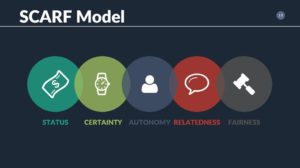Understanding Personality/Behavior Traits for Improved Workplace Communication
Effective communication is a skill that is often undervalued in the workplace. We have years of training and multiple degrees to learn our trade, but how much time along the way has been directed at learning to deal effectively with others? Typically, we focus all our energy on learning concrete design techniques (pun intended), but how do we develop our soft skills, in order to promote ourselves and our careers and be productive members of a team? How do we relate to others in an increasingly diverse workplace environment, and learn to thrive with others who may have a different personality type?
In the August 2016 session of SE University, Annie Kao, PE with Simpson Strong-Tie, gave a presentation on Effective Communication Skills for Workplace Conversations and Meetings. One of the main topics that Annie discussed was the benefit of cultivating a reward-state environment as opposed to a threat-state environment in our workplace.
When employees feel they are in a reward-state, they are able to work more effectively, both independently and as part of a team. Annie provided a useful tool to assess which values create a reward-state, and how we can use this information to be more intentional in the way we relate to our coworkers. The online SCARF Assessment looks at five domains that each of us finds more or less valuable depending on our personality – Status, Certainty, Autonomy, Relatedness, and Fairness. After completing the online assessment, the results include a brief description of each domain and how it affects our behavior.
Annie noted that, without knowing what is valued by our peers, we could inadvertently be placing them in a threat-state. For example, managers who really value autonomy may think that they are empowering their team members by giving them the freedom to work without restriction. However, if members of the team value certainty, this level of freedom may place them in a threat-state due to the lack of feedback or guidelines to follow. By understanding our own needs and the needs of others, we can be more cognizant of the way we respond and what type of feedback we give to others. This helps create an atmosphere where everyone feels valued for their contributions.
Annie also provided another resource that helps identify our tendencies toward particular behavior traits. The online DISC Assessment categorizes behavior into four groups – Dominance, Influence, Steadiness, and Conscientiousness. Based on our tendencies toward particular traits, we can be more self-aware of our own strengths and weaknesses, and learn to appreciate the tendencies of others and how their differing personalities can impact the team.
Using these assessment tools in the workplace, we can make intentional changes to our behavior and become more aware of the behavior tendencies of others in order to create a more efficient and enjoyable work environment. Sharing these tools with coworkers can help improve teamwork and elevate our respect for one another.



There are no comments yet, but you can be the first